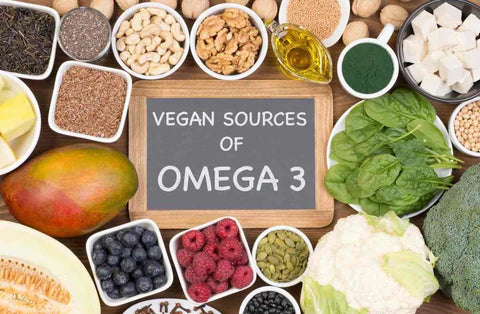Fats are an important part of a healthy diet. They provide essential fatty acids, keep our skin soft, deliver fat-soluble vitamins, and are a great source of energising fuel. But it's easy to get confused about good fats vs bad fats, how much fat we should eat, how to avoid artery-clogging trans fats, and the role omega-3 fatty acids play in heart health.
Basically, there are two groups of fats: saturated and unsaturated. Within each group are several more types of fats.
Choosing the right types of dietary fats to consume is one of the most important factors in reducing the risk of developing heart disease.
The 'good' guys
Let's start with the good guys - the unsaturated fats. Unsaturated fats include polyunsaturated fatty acids and monounsaturated fats. Both mono- and polyunsaturated fats, when eaten in moderation and used to replace saturated or trans fats, can help lower cholesterol levels and reduce your risk of heart disease.
Polyunsaturated fats (PUFA), found mostly in vegetable oils, help lower both blood cholesterol and triglyceride levels - especially when you substitute them for saturated fats. One type of polyunsaturated fat is omega-3 fatty acids, whose heart-health benefits have gained a lot of attention. The other most well known type of polyunsaturated fat is omega-6. The two polyunsaturated fatty acids Linoleic acid (omega-6) and Alpha-Linolenic acid (omega 3) are considered essential in the diet, as the body cannot make them.
The other 'good guy' unsaturated fats are monounsaturated fats (MUFA), thought to reduce the risk of heart disease. The most well known monounsaturated fat is oleic acid, or omega-9, and Mediterranean countries consume lots of these, primarily in the form of olive oil. This dietary component is credited with the low levels of heart disease in those countries. These heart-healthy fats are typically a good source of the antioxidant vitamin E, a nutrient often lacking in many diets. Monounsaturated fats can be found in olives, avocados, hazelnuts, almonds, Brazil nuts, cashews, sesame seeds, pumpkin seeds, olive oil, canola oil, and almond and cashew nut oils.
The 'bad' fats in your diet
Now on to the bad guys. There are two types of fat that should be eaten sparingly: saturated and trans fatty acids. Both can raise cholesterol levels, clog arteries, and increase the risk of heart disease.
Saturated fats are found in animal products (meat, poultry skin, high-fat dairy, and eggs) and are most often solid at room temperature, although some vegetable fats such as coconut and palm oils are liquid at room temperature. Dietary guidelines recommend limiting saturated fats to less than 7-10% or less of your total calories.
There is evidence that saturated fats have an effect on increasing colon and prostate cancer risk, so experts recommend choosing healthy unsaturated fats whenever possible.
There are two types of trans fats (or trans fatty acids) - the naturally occurring type, found in small amounts in dairy and meat, and the artificial kind that occur when liquid oils are hardened into 'partially hydrogenated' fats.
Natural trans fats are not the type of concern, especially if you choose low-fat dairy products and lean meats. The real worry in the many diets is the artificial trans fats. They're used extensively in frying, baked goods, cookies, icings, crackers, packaged snack foods, microwave popcorn and some margarines.
Some experts think these fats are even more dangerous than saturated fats, including butter or lard. Research has shown that even small amounts of artificial trans fats can increase the risk for heart disease by increasing LDL 'bad' cholesterol and decreasing HDL 'good' cholesterol. Many experts recommend keeping trans fats consumption as low as possible, preferably limiting trans fat to less than 2 grams per day.
Below is a summary of the most popular vegetable oils used today, and the breakdown of their fats.
Type of Oil |
Saturated Fats |
Omega 3 (PUFA) |
Omega 6 (PUFA) |
Omega 9 (MUFA) |
| Flax Seed Oil | 9% | 61% | 14% | 16% |
| Hemp Seed Oil | 11% | 16% | 57% | 13% |
| Evening Primrose Oil | 9% | 1% | 73% | 7% |
| Safflower Oil | 10% | Trace | 76% | 14% |
| Grape Seed Oil | 10% | 1% | 72% | 17% |
| Sunflower Oil | 12% | 1% | 71% | 16% |
| Walnut Oil | 11% | 11% | 54% | 24% |
| Soy Bean Oil | 15% | 8% | 54% | 23% |
| Borage Oil | 12% | Nil | 37% | 25% |
| Canola Oil | 7% | 11% | 21% | 61% |
| Olive Oil | 15% | 1% | 9% | 75% |
| Coconut Oil | 91% | Nil | 2% | 7% |
| Rice Bran Oil | 20% | 1% | 32% | 47% |
| Butter Fat | 68% | 1% | 3% | 28% |



